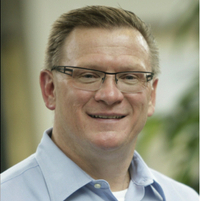Glyn Jones, partner at EHS Partnerships, looks to the future of Canadian workplaces and why we need to re-think our safety leadership approach in a post-COVID world

COVID-19 is still with us. The deployment of the vaccine is going ahead. There have been some small wins, but obstacles remain. The organizational hierarchy in many workplaces has been mixed up and messed up. Positions have been eliminated and many others have been re-set or re-calibrated. As we look to the summer and beyond, we need to start thinking about how to get our occupational health and safety programs back on track — some would say as safety professionals we need to get ready to re-invent ourselves and redefine our place in Canadian workplaces.
Most safety practitioners hold little formal authority over the operations teams they support. As production ramps up and moves toward the new normal, we need to be sure safety is seen as a priority, along with production and quality. A major focus for the safety practitioner needs to be support of the operations team and becoming allies of the front-line supervisors. Safety practitioners need to position themselves as tutor, coach and resource partner to the operations’ front-line supervisors. We need to be seen as competent, available and willing to lend a helping hand.
So, how do we do this? Safety leadership requires we have an open and trusting relationship with the front-line supervisors. This employee group is the key to ensuring safe works happens every day. This takes time. We need to open channels of communication, discuss and help to reconcile conflicting priorities, and we need to take time to educate front-line supervisors and provide meaningful safety performance feedback.
Good rapport and open communication require you establish a real relationship with supervisors. Talk to them often because this will help to develop trust and trust is king! Do not start every conversation about issues at work. Take 10 minutes every day to get to know the front-line supervisors as people first. Work on the relationship first and the jobs and tasks at hand second.
Inevitably, front-line supervisors feel the push for increased productivity without compromising quality. Supervisors want what their direct one-up leaders want — high productivity and quality while managing costs. Nobody wants to see fellow workers get injured. While the company line may be that “no job or task is so important that we won’t take the time to do it safely,” front-line supervisors see this as mixed messaging. They are told to boost production and reduce staff and material inputs. Disconnected in time and space, they also hear the safety message. Safety may not be fully articulated as a priority, and when confronted with this conflict in priority, production and quality will win out over safety every time. It is up to you to work with the management team and ensure that the senior leadership team reinforces the whole message that production, quality and safety are all necessary. The ultimate goal is safe production every day.
Front-line supervisors need to get feedback on the right metrics at the right time. Production and quality metrics are shared hourly, daily, weekly and monthly. Safety metrics need to be broken down and shared as part of the priority data being reviewed as input to the minute-by-minute decision-making of the production team. The focus has to be on real-time leading indicators. Lagging indicators may be what the C-suite wants to see; the front-line team is living everything in real time and so safety data needs to be in real time. Getting them data once a month about what happened last month will not be useful in building engagement to the safety management processes. Mid-shift inspections, hazard ids, PPE compliance observations and closure rates for corrective actions are all real-time types of measures to which the front-line supervisor can relate. Take a look at the dashboard they use to measure production and quality and make sure you get relevant leading indicators for safety on it, too.
We need to support the front-line supervisors to achieve safe production. We need to get to know them, support them and give them real data. They are the key to safe production and, as we work to get our occupational health and safety programs back on track, we need them to be with us and be part of the process.
 Glyn Jones is a partner at EHS Partnerships Ltd. in Calgary. He is a consulting occupational health and safety professional with 30 years of experience. He also provides program design and instructional support to the University of New Brunswick’s OHS and Leadership Development certificate programs. He can be reached at [email protected] or you can follow him on Twitter at glynjones_ehsp.
Glyn Jones is a partner at EHS Partnerships Ltd. in Calgary. He is a consulting occupational health and safety professional with 30 years of experience. He also provides program design and instructional support to the University of New Brunswick’s OHS and Leadership Development certificate programs. He can be reached at [email protected] or you can follow him on Twitter at glynjones_ehsp.
This article originally appeared in the March/April 2021 issue of COS.






